Lots of things to do in Cedar Key, all in a historic setting
You won’t be stopping at Cedar Key on your way to someplace else. The closest cities, Ocala and Gainesville, and the main route, I-75, are 60 miles away.
And that’s exactly why it’s worth a drive to visit Cedar Key.

The charming little town, with fewer than 1,000 permanent residents, has a fascinating history (it’s Florida’s second oldest town) and dozens of interesting old buildings.
It’s located on an island that is perfect for exploring by bicycle and a nearby island makes a great kayaking destination. The town is full of art and artists and has several good seafood restaurants.
With no high-rises and no franchise restaurants, Cedar Key feels untouched by today’s world. A few residents I chatted with explained they do not lock their home or car doors.
The folks who promote visiting Cedar Key like to say it is Key West 50 years ago.
It’s also an inexpensive destination. Recently, it was named the #1 least expensive beach town in the US for lodging by a website called upgradedpoints.com. According to the site, the average nightly hotel rate is $191 and a week’s stay is $1,330. Nothing in Florida comes close; Key West (among the highest in US) averages a $692 nightly hotel rate!
Things to do in Cedar Key you’ll find in this story:
— Have a drink at the historic Island Hotel Neptune Bar.
— Kayak to an island ghost town with a pristine beach and lots of wildlife.
— Stroll the waterfront and learn about the area’s wildlife and ecology.
— Spot eagles and other birds with a walk in a park or a coastal boat tour.
— Dine on fresh seafood overlooking the Gulf and try award-winning clam chowder in Florida’s clam capital.
— Explore quiet lanes by bike.
— Take a short drive to hike to a prehistoric Indian shell mound or visit a pristine turquoise spring.
Why history buffs should visit Cedar Key
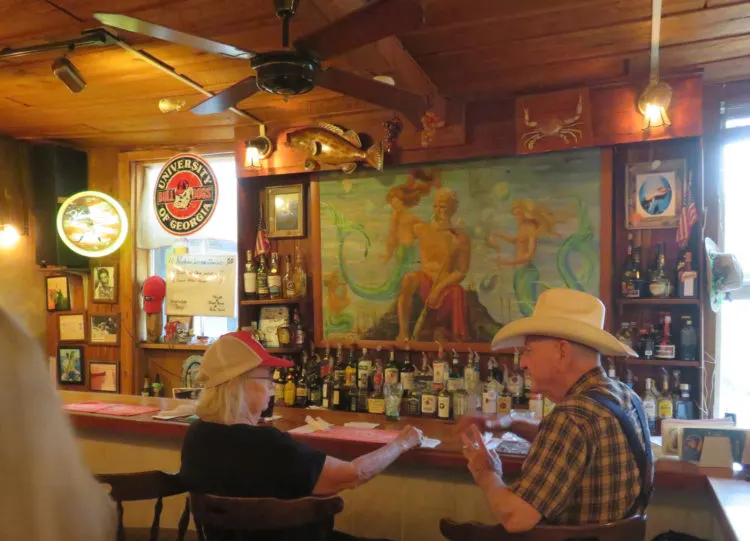
Like Key West, its history goes way back. It was founded in the 1850s but its big break was in 1861, when it became the western station on the Florida Railroad, the first link across the state, originating in Fernandina on Amelia Island.
As an important port, it saw some action in the Civil War. After the war, the many cedar trees brought prosperity as the Faber pencil company opened a wood mill here.
Today Cedar Key feels like an old fishing village. (Indeed, its clam farms are a multi-million dollar industry.)
Its three-block-long main street is lined with historic buildings holding galleries and shops. Charming wooden cottages cluster in residential streets. There’s no McDonald’s or Wal-Mart.
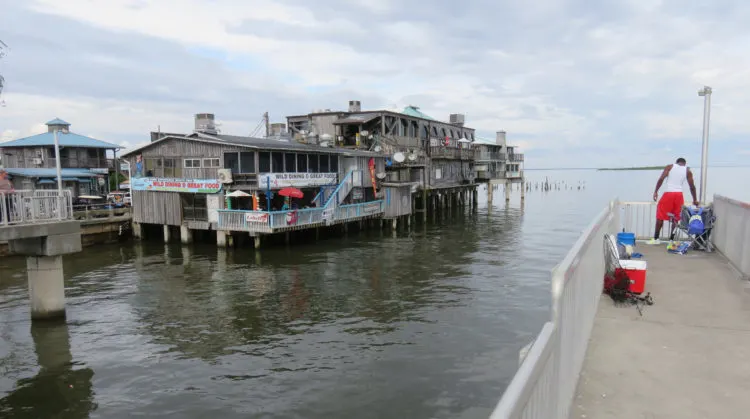
Historic Island Hotel is worth a visit, even if you’re not staying there
We stayed at the Island Hotel, opened in 1859 as Parsons and Hale’s General Store and now on the National Register of Historic Places. It’s a gracious bed and breakfast with 10 rooms on the second floor, a wonderful restaurant on the main floor and a popular bar off the lobby.
There are no phones and no TVs and a broad balcony wraps around the second floor. It was from here, the story goes, that Jimmy Buffet sang and strummed his guitar during many visits in the 1980s.
The hotel has hosted a random collection of other celebs that would make a good trivia question: What do Jimmy Buffet, Richard Boone, Myrna Loy and Tennessee Ernie Ford have in common?
If you don’t stay at the Island Hotel, definitely stop by and have dinner or a drink. In the Neptune Bar, the mural of King Neptune with its bare-breasted mermaids was probably scandalous when painted in 1948. In honor of the mermaids, we had a specialty drink called the Mermaid Mule ($10), a tall blue cocktail with curaçao, vodka and ginger beer. We loved it.
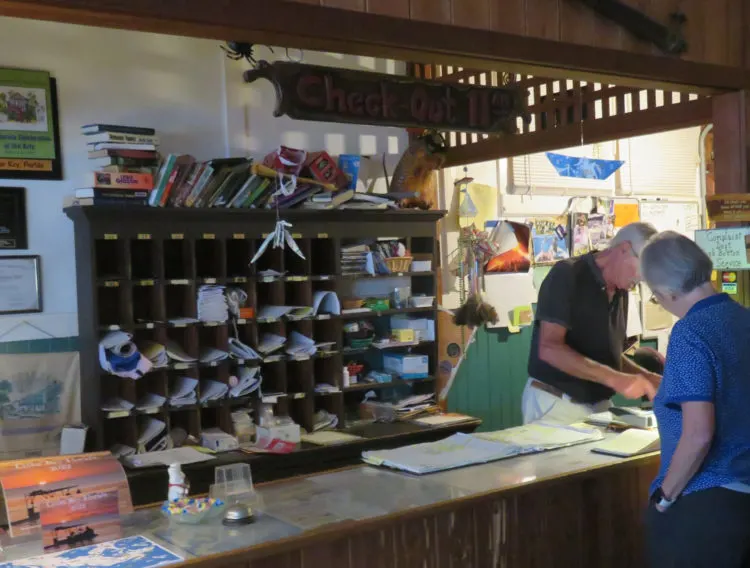
The Island Hotel restaurant serves dinner and we enjoyed excellent seafood, fresh rolls made on the premises and perfectly prepared fresh vegetables. (Breakfast in the dining room, for guests of the hotel only, was exceptional.)
This historic hotel also is reputed have multiple ghosts — 13 , according to the Island Hotel website. The ghosts include a Confederate Army guard, a moonshiner, a murdered prostitute, a former owner, two Native Americans, a fisherman and others. Here is an account of ghost stories from the Island Hotel.
Rooms at the Island Hotel range from $90 a night for a room with a shared bathroom to $155 a night.
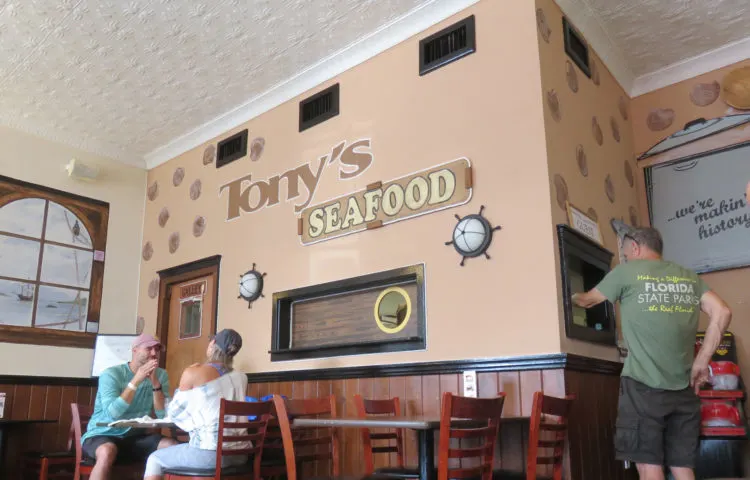
Feast on fresh seafood in an Old Florida setting
Cedar Key’s waterfront Dock Street is full of old-fishing-village atmosphere and restaurants that specialize in fresh seafood.
We had dinner at 83 West at 310 Dock St. eating in the downstairs bar because we loved the open windows and view of the Gulf. Redfish sandwich and shrimp and grits were both excellent. (You order from the same menu as upstairs, where there is table service and beautiful views from big windows. Downstairs, the food arrives in a takeout box.)
Another night we enjoyed fresh fish at Duncans on the Gulf, 490 Gulf St., sitting outside overlooking the water.
There are lots of places to eat, but we were happy we made time to have a bowl of chowder at Tony’s, 597 2nd St. The small casual restaurant on the main street is famous for winning a national contest for its clam chowder three times, competing with the top chefs from New England. In October when we visited, it was only open for lunch.
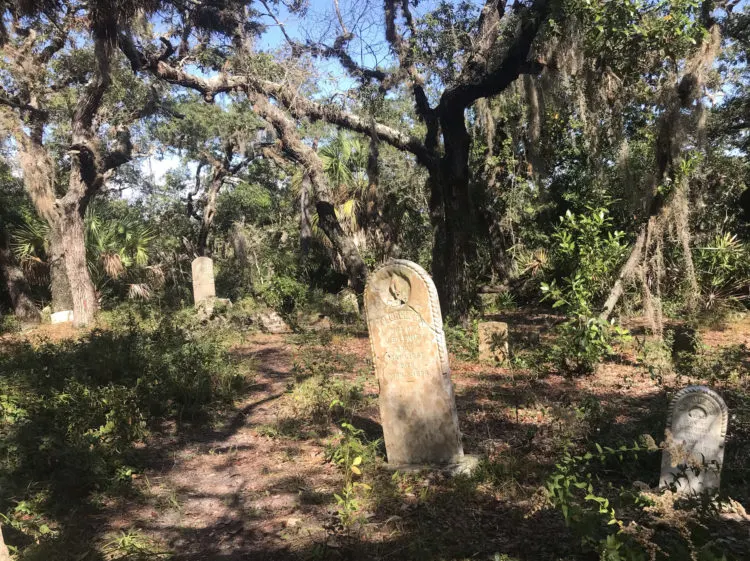
Atsena Otie Key: Ghost town makes good kayak trip
Kayaking out to Atsena Otie Key is one of the top things to do in Cedar Key.
Atsena Otie Key is an island that was home to the original town built in this cluster of small islands. This is where the pencil-wood factory was built and, in the 1890s, it had several hundred residents.
That ended when the hurricane of 1896 and a 10-foot storm surge flattened the town. Surviving residents moved to the island that is now Cedar Key. (Called Depot Key, it had a small population because of the train depot .)
Today, the historic island of Atsena Otie Key is managed by the Cedar Keys National Wildlife Refuge. You can see the old cemetery at the end of a path through the woods under a canopy of oaks.
If you paddle around the island, it’s a 1.5 mile trip. Here’s our story on kayaking to Atsena Otie.
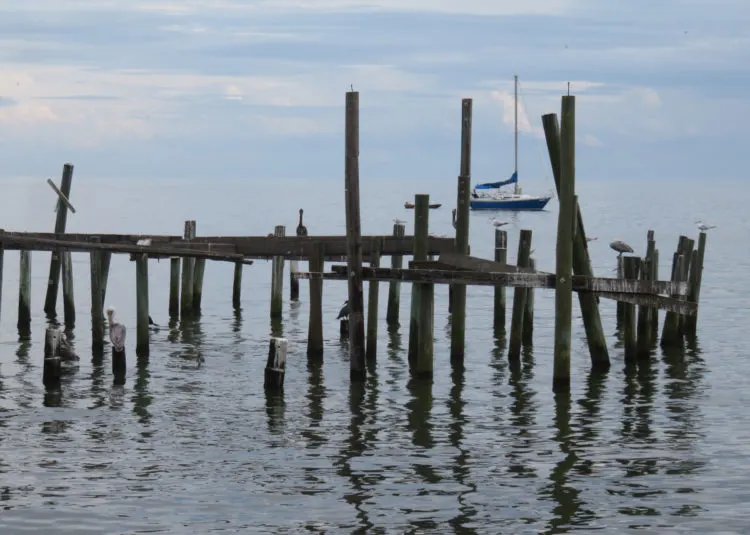
Stroll the waterfront and learn a little
One of the joys of Cedar Key is walking around the picturesque waterfront, from the beach to the docks to the large and popular free fishing pier.
Be sure to pause at the informative signs posted periodically here. I learned some interesting things about horseshoe crabs, dolphins, oysters and clams on these interesting exhibits.
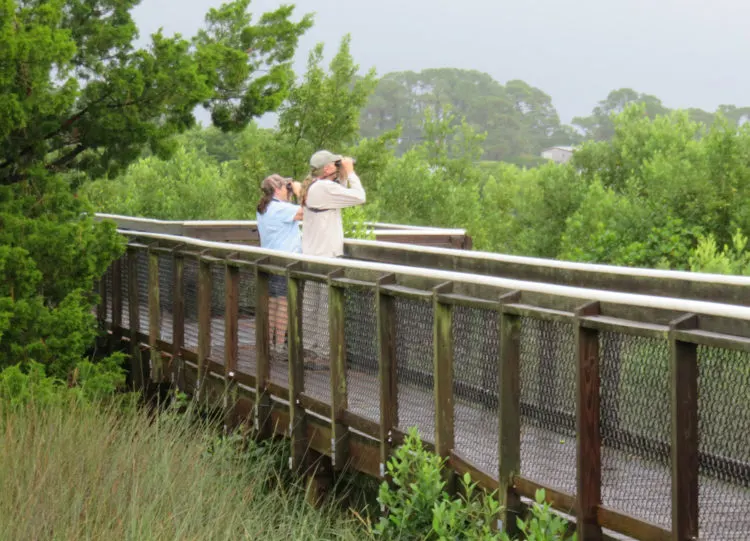
Birding is one of top things to do on Cedar Key
The birding in the Cedar Key is exceptional. Several islands have eagle nests (indeed we did see an eagle overhead) and 300 to 400 magnificent white pelicans winter here. In the summer, roseate spoonbills are common. The ultimate birding treat happens twice a year: The only flock of migrating whooping cranes in eastern American flies overhead to and from the Chassowitzka National Wildlife Refuge an hour south of here.
If you’re a birder, you may want to book a trip with Captain Doug Maple and his Tidewater Tours. Captain Doug runs various trips with expert narration and local knowledge.
A popular birding area is Cemetery Point Boardwalk, 16050 E. Point Road. The 1,200 foot boardwalk, which leads from the parking area into the recreation-oriented park, offers views of birds in a thriving tidal marsh. It’s a delightful place to explore even if you don’t spot birds.
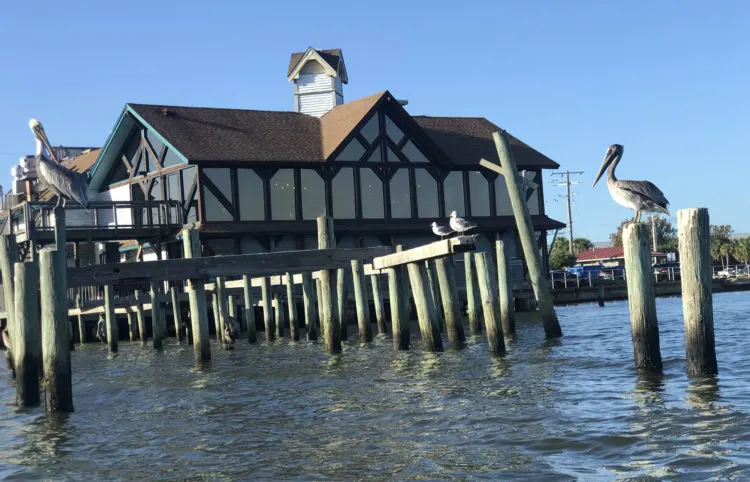
Another interesting place to walk and possibly see birds is Cedar Key Railroad Trestle Nature Trail at Grove Street off Florida SR 24.
Trestle Trail, located on the only road in and out of Cedar Key, is marked as you enter town but not in the other direction, so watch for Grove Street.
For a half mile, the trail follows the raised railroad road bed out to the deteriorating 100-year-old trestle where there is a view of salt flats and birds. The train was important to Cedar Key, but the passenger train service ended in 1932 and major railroad lines had bypassed Cedar Key. Loss of the railroad began Cedar Key’s slide into obscurity.
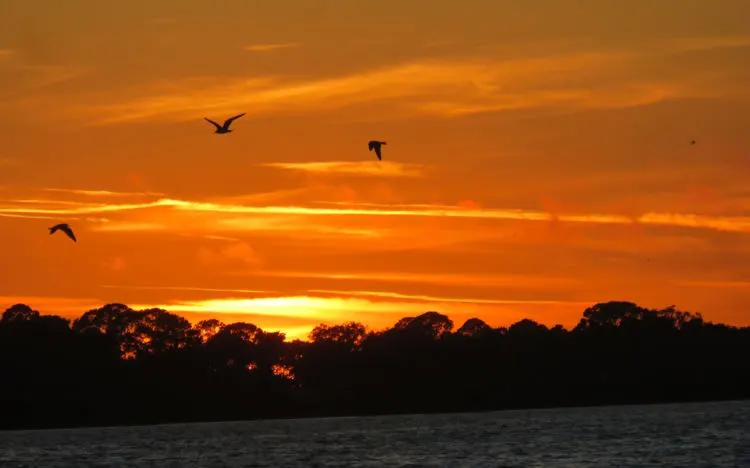
Be sure to watch the sunset when in Cedar Key
Here’s our tip for the best place to watch the sunset in Cedar Key: Walk about four blocks west from the fishing pier down First Street, home to several neat historic cottages. Where the island ends, at G Street, the shoreline is open with a view of water and islands in the distance. There are a few benches and an excellent view of the western sky. The night we watched, the sky was full of swirling seagulls.
Later, check out the night sky too — Cedar Key has little light pollution and on a clear night, it’s dazzling.
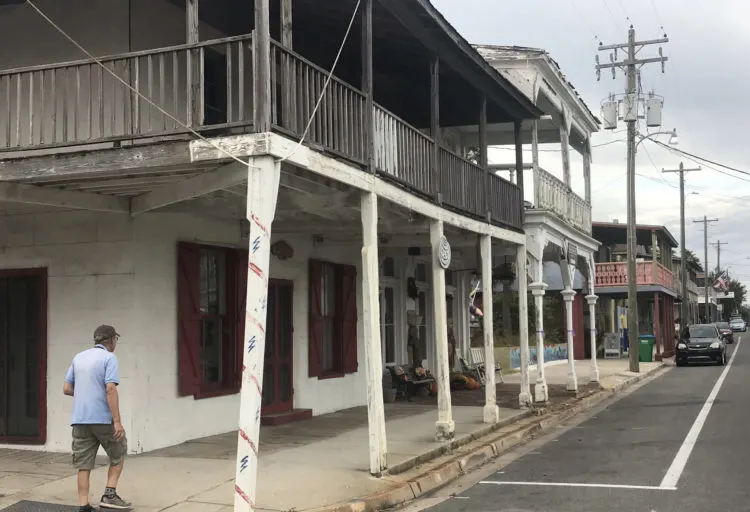
Biking in Cedar Key
We brought our bikes along and once we were in Cedar Key, we walked or biked everywhere.
Except for Highway 24, the main route in and out of town, Cedar Key is a great place to explore by bike. We particularly liked bicycling out to the airport because there were excellent water views and Airport Road has little traffic.
We also biked to the Cedar Key Museum State Park, which is small but very interesting. It’s located in an out-of-the-way residential area of Cedar Key about two miles from downtown, making it a perfect biking destination. Along our bike route, we also stopped at Cemetery Point Boardwalk.
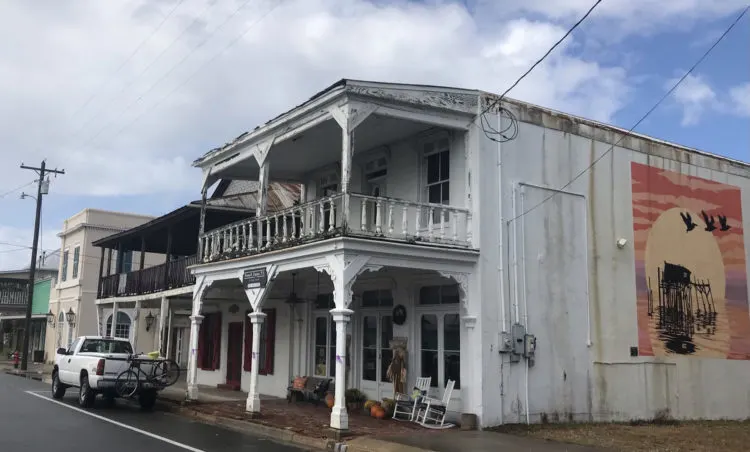
Exploring the area around Cedar Key: Springs and shell mounds
The region around Cedar Key offers many good opportunities to explore little-visited areas.
A few miles from town is the Cedar Key State Scrub Preserve with many miles of trails for hikers and mountain-bikers.
North of Cedar Key is the road to the Shell Mound area of Lower Suwannee National Wildlife Refuge. This area preserves a prehistoric Indian shell mound with two hiking trails. A fishing pier has spectacular Gulf views and is a good spot for bird watching.
Cedar Key is about 40 minutes from Manatee Springs State Park and Fanning Springs State Park, stunning turquoise-blue crystal clear springs on the Suwannee River, popular with swimmers in the summer and with snorkelers and divers year round. Manatees take refuge in these springs in cold weather and sometimes can be viewed from the boardwalks. The parks have extensive hiking trails and Fanning has a kayak outfitter for paddling on the Suwannee River.
Cedar Key is not for everyone
If you’ve read this far, you know Cedar Key is full of the things I love.
But I was chatting with a staff member at the Island Hotel who said she does meet an occasional visitor who doesn’t see what I see. The beach is pretty small. You can drive through and “see” the whole town in an hour. They ask: So what is there to do here?
Yes! That attitude is just fine by me. If Cedar Key bores some people, maybe it will keep on being the old Cedar Key I love.
Resources when visiting Cedar Key
- Florida Rambler story on RV camping in Cedar Key
- The Island Hotel
- Shell Mound area of Lower Suwannee National Wildlife Refuge
- Manatee Springs State Park
- Camptel Cedar Key RV Resort, including “tiny homes” and yurts
- Angler’s RV Campground
- Cedar Key RV Resort
- A fascinating photo-story of how they farm clams on Cedar Key a.k.a. “Clamelot.”
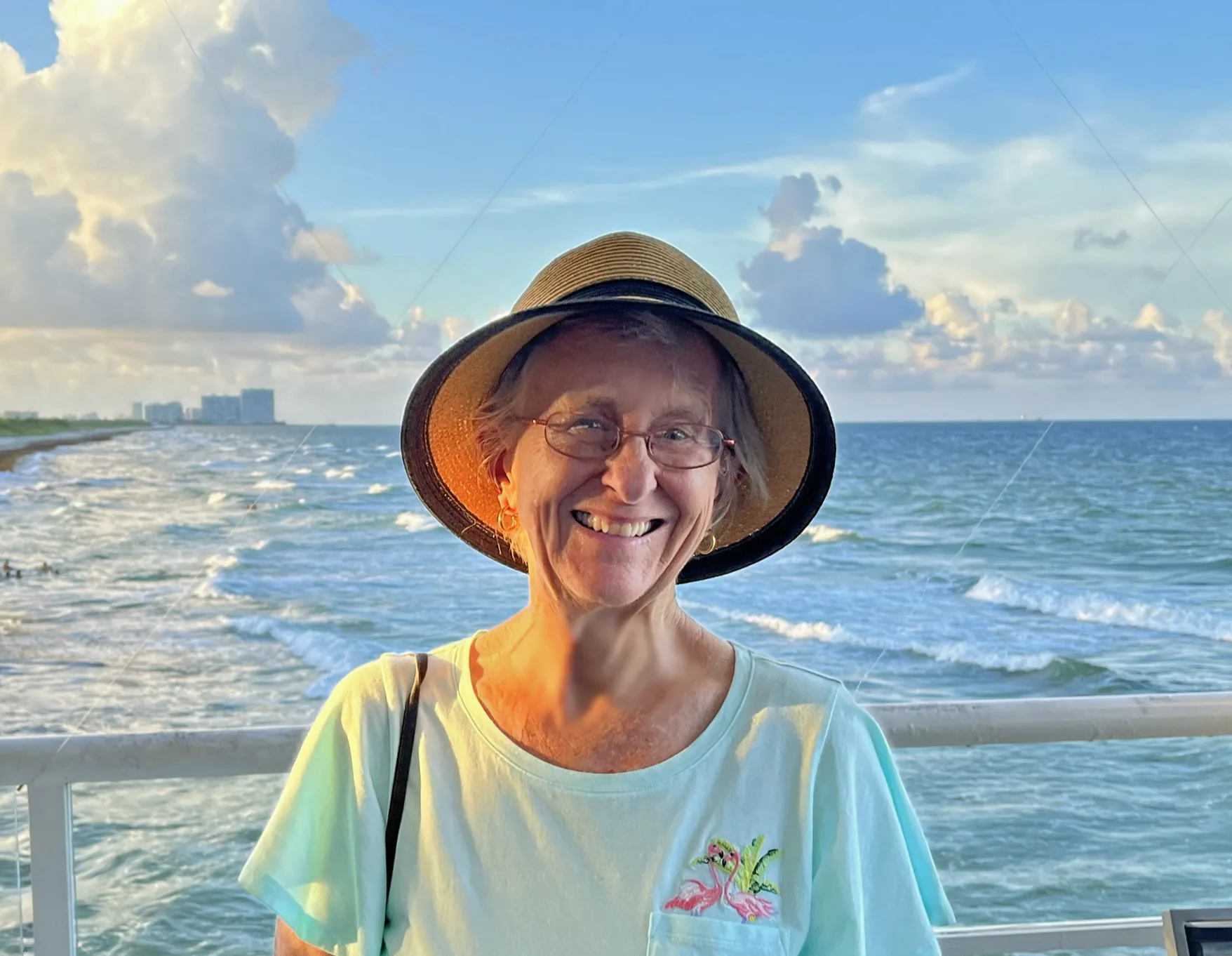
The author, Bonnie Gross, travels with her husband David Blasco, discovering off-the-beaten path places to hike, kayak, bike, swim and explore. Florida Rambler was founded in 2010 by Bonnie and fellow journalist Bob Rountree, two long-time Florida residents who have spent decades exploring the Florida outdoors. Their articles have been published in the Sun Sentinel, the Miami Herald, the Orlando Sentinel, The Guardian and Visit Florida.

william berger
Thursday 29th of February 2024
total dump.. How is this a real story! everything is falling apart and unsafe! No livable places to stay. We wasted time and money.
Bonnie Gross
Thursday 29th of February 2024
So sorry you had a disappointing time. Our story's last paragraph reads: "Cedar Key is not for everyone "If you've read this far, you know Cedar Key is full of the things I love. But I was chatting with a staff member at the Island Hotel who said she does meet an occasional visitor who doesn't see what I see. The beach is pretty small. You can drive through and "see" the whole town in an hour. They ask: So what is there to do here?"
Kathy Slemp
Monday 26th of December 2022
Staying here at The Beach Front Motel right here, right now! We are here for our birthdays! Mine was yesterday on Christmas & hubby’s is on the 28th! Thanks for hooking us up Shelly & thanks Lonnie for checking us in!! The view here is SPECTACULAR!!!!
mark cliver
Friday 29th of July 2022
Had a close friend that owned property on the Key. Said he loved every minute there. We lived in Stuart, as was his last name. You may know him as Jack. Colorfull fella. Can't help but miss him though. I have to try to get there. Sounds great. Bucket list destination. Thank's!! M C.
Tina
Wednesday 18th of May 2022
Presently visiting Cedar Key and according to the history Cedar Key was called Way Key and Atsena Otie did not have a pencil factory. The island (Atsena)actually had two mills that they milled the cedar for pencils and then the pieces were shipped to Faber Eberhard in NY where the graphite was added. The Island House Hotel and Restaurant is fabulous as everything is made from scratch. Presently the business is for sale for $1.2 million.
James
Monday 2nd of May 2022
Bonnie: excellent as always! We are staying at Firefly Cottages, right on a back bayou. We've done everything that you recommended, except bike: shoulder work in progress (May 2, 2022). Thx for all of your articles over the years. James "Ramblin" J.